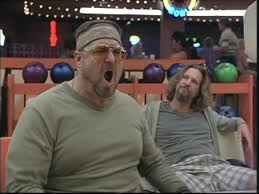 |
Donald Thorp 1946-2003 USN 1964-1985 Mesothelioma, 1999 |
Today, to honor our country’s surviving veterans, whether from WWII, the Korean War, the Vietnam War, or more recent conflicts, who were exposed to deadly asbestos fibers, but for whom the US Department of Defense has never funded a treatment program, we are proud to donate $100,000 to the Pacific Meso Center (PMC).
The PMC stands alone as the only medical foundation which is dedicated to both basic science and clinical research on therapies for treating patients with mesothelioma. Of the 3,500 Americans diagnosed with mesothelioma annually, about a third of those patients were exposed to asbestos while serving their country in the armed forces or working as civilians in shipyards which built or repaired naval ships. For over 40 years, these service men and women, many of them heroes, have been dying of this horrible disease and this amounts to ten times the number of deaths as the entire Iraqi war!
Regrettably, despite the clear link between mesothelioma, asbestos, and the US Navy, the DOD has never acknowledged it's duty to care for vets with asbestos diseases. The DOD has invested trillions of dollars over the past three decades in equipping our forces with the most sophisticated weaponry in the world, but it has been inexcusably penurious when it comes to funding programs to help prevent, diagnose or treat vets with service connected asbestos disease, such as mesothelioma.
 |
Clyde Robison, Sr USN 1956-1960 Mesothelioma, 2007 |
We salute our front line soldiers, as well as all the doctors, nurses, and personnel within our vast network of Veterans Administration hospitals who daily attempt to treat veterans with asbestos diseases, which can take 20-50 years to manifest after initial asbestos exposures.
 |
Thomas Reed 1950-2007 USCG 1969-1973 Mesothelioma, 2006 |
One bright spot on treatment front, however, is the work and energy of Dr. Robert Cameron, a thoracic surgeon at the David Geffen School of Medicine at UCLA, who also serves as the Chief of Thoracic Surgery at the VA Medical Center in West Los Angeles and one of the only mesothelioma experts in the VA Medical System.
Dr. Cameron, a scientific advisor for the Pacific Meso Center, has thankfully taken a leadership role in framing the mission to develop a nationwide treatment program for veterans with mesothelioma.
Dr. Cameron commented "we are preparing to ask the VA to live up to its obligations to provide the best medical care for these veterans suffering from mesothelioma by creating a national center of excellence for both research and treatment at the West Los Angeles VA Medical Center where any veteran from across the country can come and be treated with the most advanced medical treatment available worldwide. We not only can but we must finally do this for our veterans." We applaud his interest in this orphan, underfunded disease.
Twenty years ago, when we first began representing veterans with mesothelioma, the lack of a federally funded program was perhaps understandable. But, today, the lack of a program is simply negligent. As my client Donald Thorp, a former Navy officer, said in 2000, "We served our country honorably. I cannot accept that our country has not taken responsibility to serve us."
Dr. Cameron recently lectured a large group of asbestos industry lawyers that despite an annual budget of $5 billion, the National Cancer Institute has never funded research on asbestos cancer commensurate with its incidence. He also noted that three promising therapies -- the IL-4 toxin, cryotherapy and stromal cell immunotherapy -- would each require start up funding of $2-3 million, which is a tiny fraction of the financial investment for chemotherapy drugs.
Can the country afford a few million dollars a year for meso research? Yes. In 2012, our country has budgeted a whopping $1.4 trillion for defense related costs, including $707 billion for the DOD.
We are hopeful that our donation will spur the PMC to continue to champion its campaign to partner with the DOD and DVA in the creation of a mesothelioma research program for our veterans who, long after their honorable discharge, continue to battle with war-related cancer.
Roger and Ann Worthington
December 16, 2011
Dr. Cameron, a scientific advisor for the Pacific Meso Center, has thankfully taken a leadership role in framing the mission to develop a nationwide treatment program for veterans with mesothelioma.
Dr. Cameron commented "we are preparing to ask the VA to live up to its obligations to provide the best medical care for these veterans suffering from mesothelioma by creating a national center of excellence for both research and treatment at the West Los Angeles VA Medical Center where any veteran from across the country can come and be treated with the most advanced medical treatment available worldwide. We not only can but we must finally do this for our veterans." We applaud his interest in this orphan, underfunded disease.
 |
James Hart 1943-2007 USN 1961-1963 Mesothelioma, 2006 |
Can the country afford a few million dollars a year for meso research? Yes. In 2012, our country has budgeted a whopping $1.4 trillion for defense related costs, including $707 billion for the DOD.
We are hopeful that our donation will spur the PMC to continue to champion its campaign to partner with the DOD and DVA in the creation of a mesothelioma research program for our veterans who, long after their honorable discharge, continue to battle with war-related cancer.
Roger and Ann Worthington
December 16, 2011
------------------------------------------------------------------------------------------------------------------
Honoring Admiral Elmo Zumwalt and Remembering the Service Connected Asbestos-Induced Mesothelioma That Killed Him
------------------------------------------------------------------------------------------------------------------






















